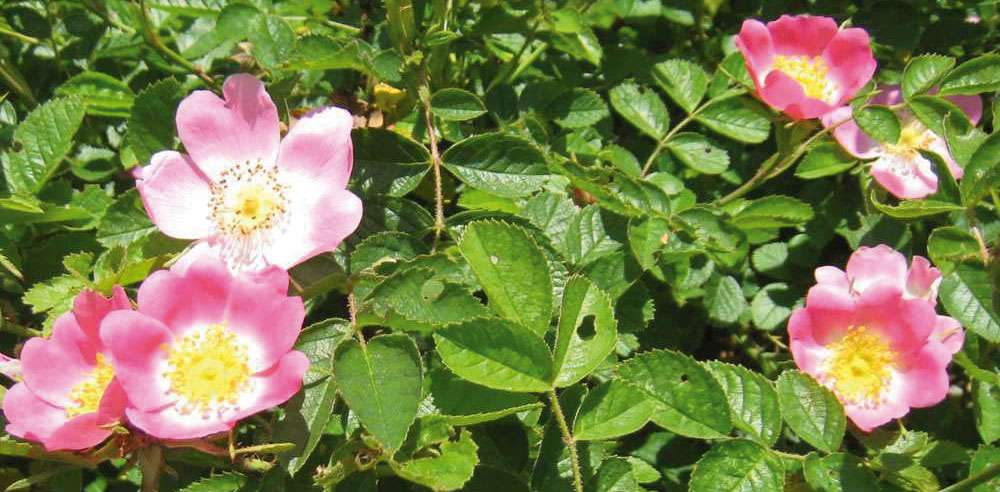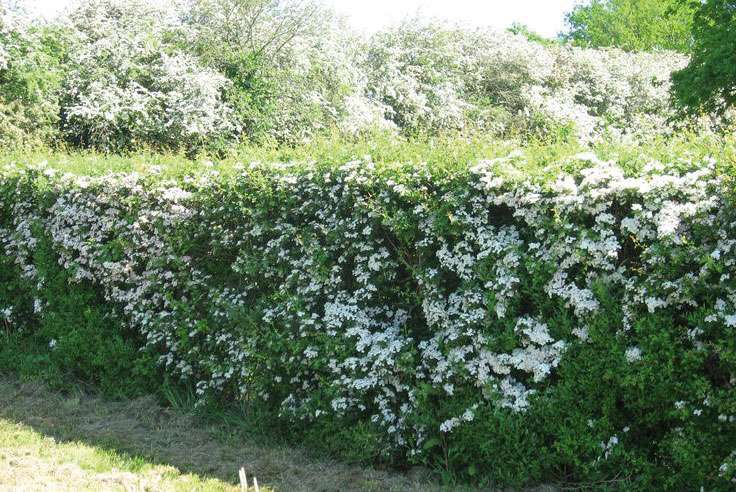
My garden is completely surrounded by mixed deciduous hedging with a little bit of holly at the top – and I love it, as do the birds! I have to admit that I’ve watched with dismay as some neighbours have pulled out their hedging, only to say some years later how much they miss it. I’m writing this month, therefore, to highlight the benefits of choosing hedging or even, if you’re considering ripping your hedge out, to perhaps persuade you to change your mind!
As the title of this article suggests, I’m not talking about non-native evergreen hedging here that can quickly get out of hand, like Leylandii or laurel which also don’t don’t encourage wildlife or plants beneath them. No, I’m talking about deciduous native shrubs and slow growing trees from the U.K.
On one of my regular walks recently, it was a joy to watch a traditional hedge being laid. Unfortunately, this skill is dying out as more people get fencing instead – but the gradual demise of hedgerows in our gardens has an environmental consequence: soil erosion, more pests, more wind, more dust and far, far less biodiversity. This is especially the case if you live somewhere without lots of tree cover. Indeed, the RSPB have stated that: “. . . hedges may support up to 80% of our woodland birds, 50% of our mammals and 30% of our butterflies. They also provide habitat for frogs, toads, newts and reptiles.”
The benefits of hedging
As such, our sometimes oblivious replacement of hedging with fencing is doing more damage than we could possible realise. There are numerous reasons, therefore, why it’s better to opt for hedging over fencing, and here are some of them:
- Hedges capture pollution, so if you suffer with a respiratory problem e.g. asthma, a hedge is more of a must than an option. Indeed, I remember seeing a news item a few years ago whereby a hedge had been planted at the front of a row of houses on a busy road, as a scientific experiment. It decreased the air pollution in a quantifiable way.
- Hedges mitigate flooding risk, plus they actually conserve water by blocking summer winds which speed up evaporation (this is worst of all on a windy day apparently!). Instead, hedgerow trees and shrubs store water in their root systems and will ultimately save you time watering your garden!
- Hedges provide food and shelter for wildlife and also act as “wildlife corridors”, providing a safe channel for wildlife to move around; a deciduous hedge will also encourage more wildlife diversity than planting a wildflower patch!
- Hedges stabilise soil erosion by slowing down water as it runs over the hedge roots.
- There’s absolutely no doubt that a native, deciduous hedge looks gorgeous – there just no contest when it comes to how a hedge looks compared to a fence!
- A hedge is much more effective as a sound barrier than a fence. My own hedge is testament to this!
- Hedges are a great security feature, especially if you plant prickly shrubs/trees like hawthorn, blackthorn or dog rose!
- Hedging is ultimately a much cheaper option, as you won’t need to replace it or paint it at regular intervals plus, if you choose slow growing shrubs and trees they will be relatively low maintenance.
- Hedges can also of course provide you with food! You can grow a number of edibles in a hedge (more recently called a “fedge”) for example: blackberries, blueberries, hazel nuts – and lots more!
- If you’re still not convinced then ensure that any fencing you opt for is FSC fencing (Forestry Stewardship Council), otherwise you could find that your fence panels have come from the Amazon rain forest (about 18% of wood imported into this country is from tropical rainforest) – and of course, fencing has no benefits for wildlife! I’m particularly thinking here of the fencing we see these days with concrete all along the bottom preventing hedgehogs, toads, frogs, newts from travelling between gardens (and we know for certain that hedgehogs – whose population has plummeted over the past thirty years – need to be able to move between a few gardens in order to thrive).
- If you have a fence, then cut a CD sized hole in it at the bottom so that animals can move from one garden to another.
Hopefully I’ve convinced you and I do appreciate that if you’re starting from scratch it will take time for a hedge to become established (four – eight years) – but it’s worth the wait because, quite apart from all the benefits I’ve mentioned above, hedges are interesting to look at, with scent and insects etc. and don’t make you feel boxed in like a fence does, because they’re alive.
Choosing hedging plants
Finally, what types of trees and shrubs should you choose? Well, on the one hand you want slow growing plants because then you won’t have to cut the hedge too often, but on the other you want it to be nice and dense. I’d recommend the following:
- Alder Buckthorn
- Beech
- Blackthorn *
- Dog rose *
- Guelder rose *
- Hawthorn *
- Hazel (catkins)
- Holly *
- Wild cherry *
- Wild privet *
(N.B. * indicates that these are flowering plants)
. . . and while you’re waiting, you can always plant some honeysuckle. It’s a rampant grower so it will provide cover quickly, in addition to which it has beautiful flowers with a heady scent).
If you want to find out more, then have a look at this report from the Royal Horticultural Society: https://www.rhs.org.uk/science/pdf/increasing-environmental-resilience-of-gardens.pdf












